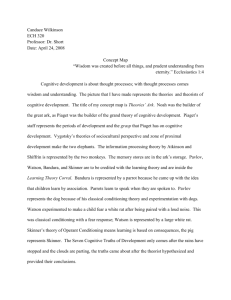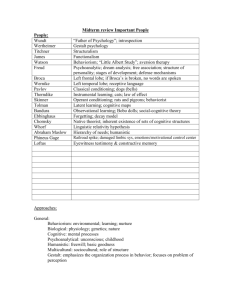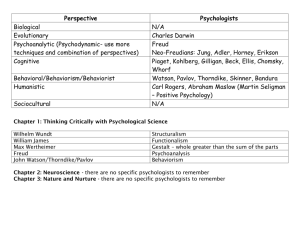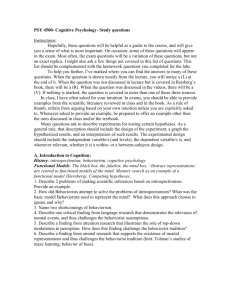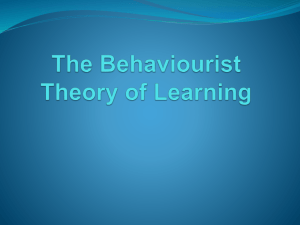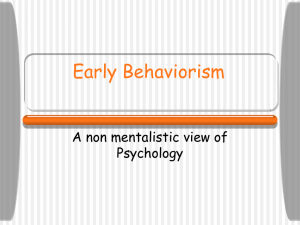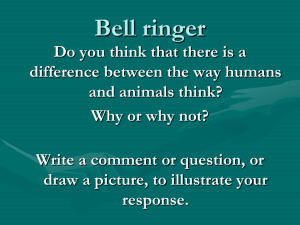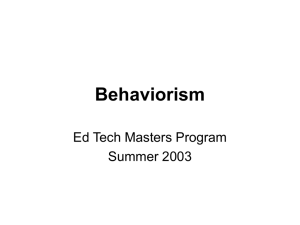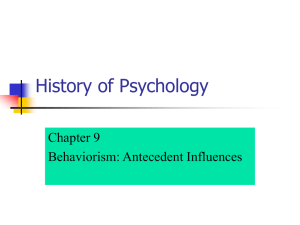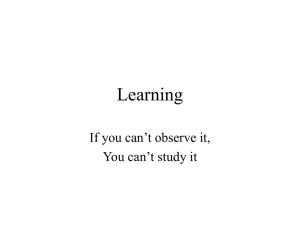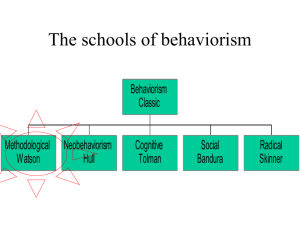as laws of association
advertisement
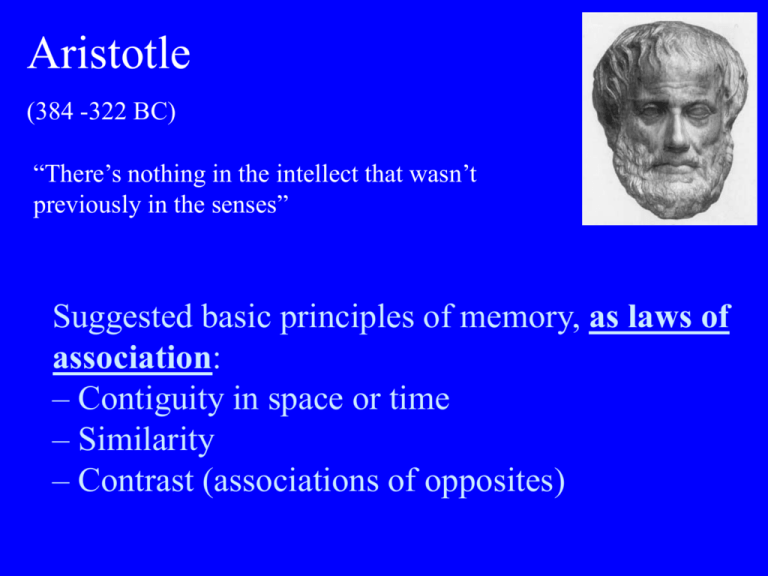
Aristotle (384 -322 BC) “There’s nothing in the intellect that wasn’t previously in the senses” Suggested basic principles of memory, as laws of association: – Contiguity in space or time – Similarity – Contrast (associations of opposites) Socrates pointing to the Real world, moments before his death by hemlock in 399 BC. Galileo (1564-1642) • Law of falling bodies • Evidence for Copernicus’ heliocentric system (jailed for this) • No, planets don’t have volition – they are moved by external forces The Reflex Arc Descartes (1596-1650) Rene Descartes (1596-1650) Luigi Galvani (1737-1798) Muscle contractions are driven by electrical impulses The Galapagos Islands Darwin (1809-1882) Theory of Evolution by Natural Selection • Crucial elements of theory: – Variation among members of species – Life is a battle for limited resources; the fittest survive – Mechanism of transmission to offspring Homologous Structures: features that are structurally similar because of common ancestry. Georges Romanes Animal Intelligence (1888) Relied heavily on anecdotes to build his uncritical views on animal intelligence. 1848-1894 Occam’s Razor The simplest explanation is the best Morgan’s Canon of Parsimony “In no case may we interpret an action as the outcome of the exercise of a higher psychical faculty, if it can be interpreted as the outcome of the exercise of one which stands lower in the psychological scale.” In studying the digestive system, Pavlov came across an important discovery about the nervous system--classical conditioning. Ivan Petrovich Pavlov (1849 - 1936) Pavlov’s Experimental Set-Up Pavlov’s Dogs Valiet TungusBarbos Edward Thorndike Criticized Romanes’ views as unscientific. Problems with anecdotes: 1. Only a single case is studied. Does it apply to whole species? 2. Observations are often not repeated or repeatable 3. Conditions under which observations are made are not well regulated 4. Do not know history of the animal 1874-1949 Thorndike (1874-1949) The Puzzle Box Law of Effect • Some randomness to behavior (variability) • Behaviors that lead to pleasurable consequences are “stamped in” • Those that have noxious consequences are weakened. John Watson (1878-1958) Founder of behaviorism • Published Psychology from the Standpoint of a Behaviorist in 1919 • Pavlovian and instrumental conditioning can explain much, if not all, behavior. • Inferring internal states is redundant and unecessary • Cognitive explanations are not scientific Watson’s famous quote: Give me a dozen healthy infants, wellformed, and my own specified world to bring them up in and I’ll guarantee to take any one at random and train him to become any type of specialist I might select -doctor, lawyer, artist, merchant-chief and, yes, even beggarman and thief, regardless of his talents, penchants, tendencies, abilities, vocations, and race of his ancestors. (Watson, 1930, p. 104) B.F. Skinner: The rise of behaviorism •Feelings don’t cause behavior •Often not aware of environmental causes of our behavior •Used behaviorist principles to explain complex psychological phenomena •E.g., language •Advocated use of behavioral technology to improve society. Arguments against cognitive approach • Philosophical: – Positing internal processes doesn’t add information – Infinite # of cognitive models for any one phenomenon – Purpose is to predict and control; what good do cognitive models do? • Empirical (testable): – All behavior can be explained in terms of stimulusresponse learning Why use animals? • General process approach • Control • Continuity between species • Today: Animal models of disease. • Utility of studying many species
